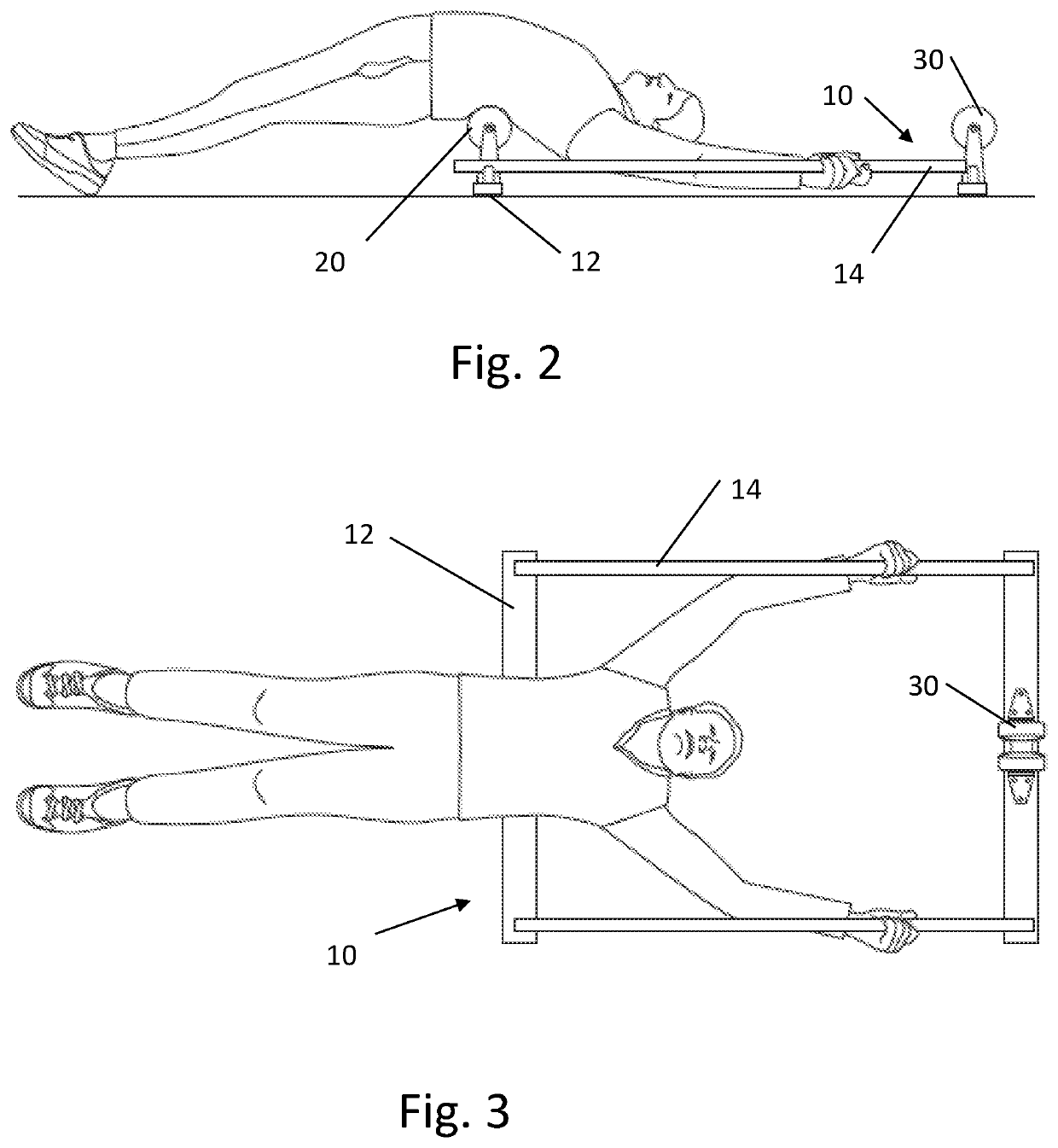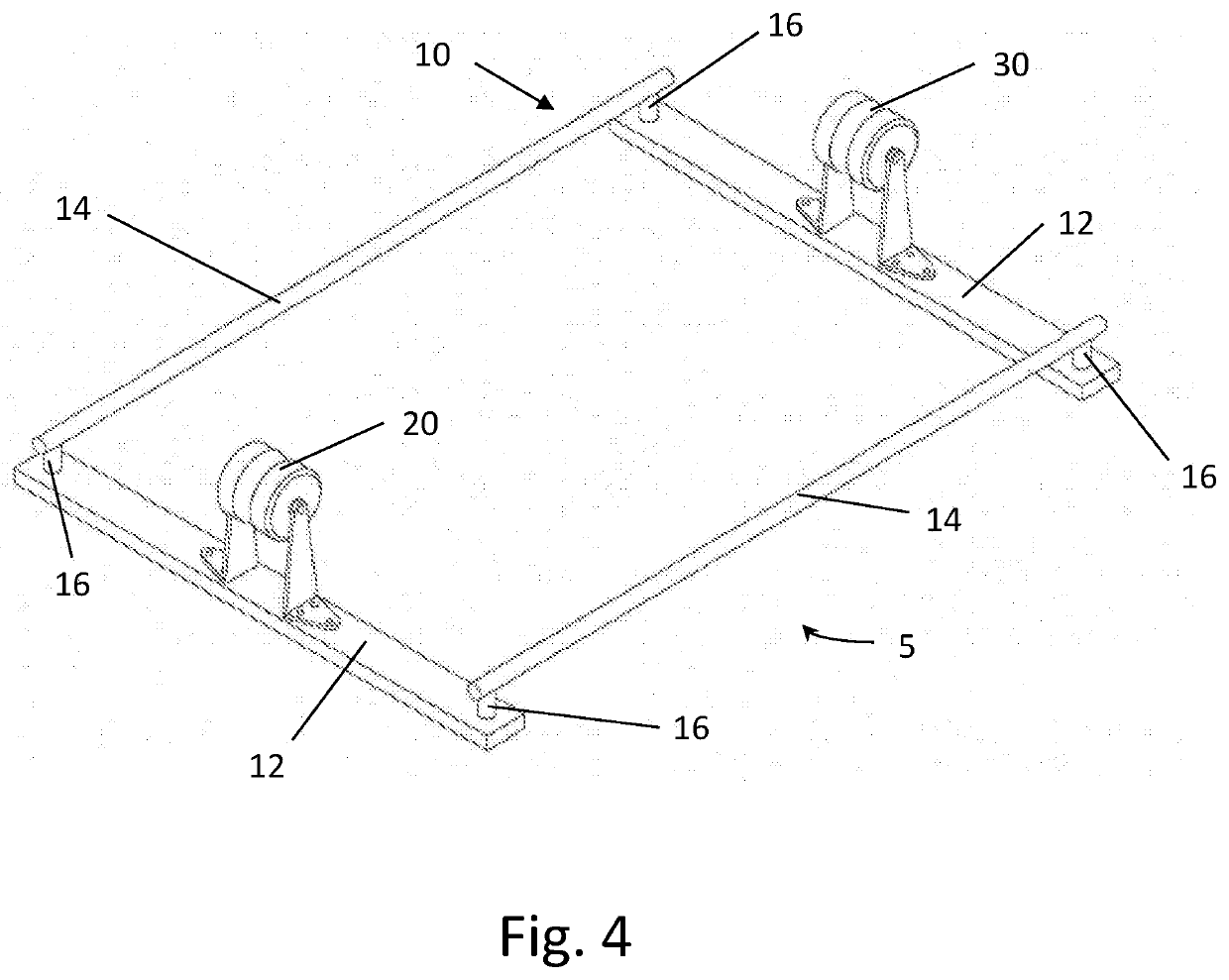Spine Extension Roller
a roller and spine technology, applied in the field of spine extension rollers, can solve the problems that one cannot effectively counterbalance the spinal flexion, and achieve the effects of increasing spinal extension, spinal extension, and positive manipulation of the spine's facet joints
- Summary
- Abstract
- Description
- Claims
- Application Information
AI Technical Summary
Benefits of technology
Problems solved by technology
Method used
Image
Examples
Embodiment Construction
[0032]The invention is embodied in an apparatus for extending the human back. As shown in FIGS. 2-9, the preferred apparatus has a frame 10, comprising transverse members 12 and longitudinal members 14. A roller 20 is rigidly supported from below by the transverse member 12. The space above the roller 20 and frame 10 is open so that a user can lie face up on the roller and grab the longitudinal members 14 with each hand to extend the back over the top of the roller as illustrated in FIG. 2-3. The user then lowers his hips to extend the spine as much as desired. The user can roll the spine, vertebrae by vertebrae, from the base of the occipital to the sacrum.
[0033]The preferred frame 10 is constructed from steel members bolted together, although welding or most any connection known in the art would suffice. The transverse member 12 is preferably a rectangular tube. The longitudinal members 14 are preferably circular tubes connected to the top sides of transverse members 12 at joints ...
PUM
 Login to View More
Login to View More Abstract
Description
Claims
Application Information
 Login to View More
Login to View More - R&D
- Intellectual Property
- Life Sciences
- Materials
- Tech Scout
- Unparalleled Data Quality
- Higher Quality Content
- 60% Fewer Hallucinations
Browse by: Latest US Patents, China's latest patents, Technical Efficacy Thesaurus, Application Domain, Technology Topic, Popular Technical Reports.
© 2025 PatSnap. All rights reserved.Legal|Privacy policy|Modern Slavery Act Transparency Statement|Sitemap|About US| Contact US: help@patsnap.com



